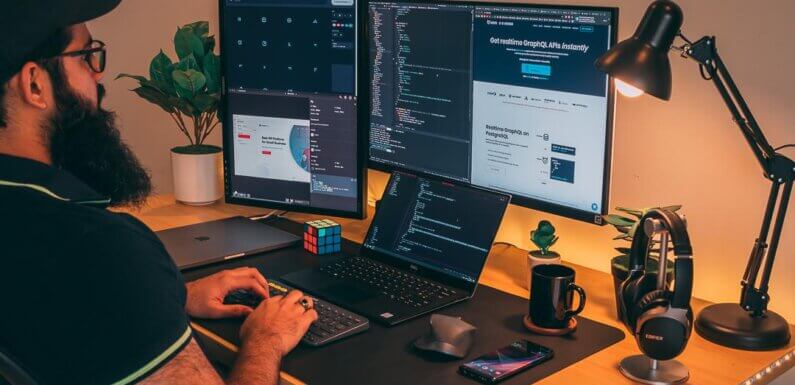
At the dawn of the blockchain age, Layer 1 laid the foundation for what has become one of the revolutionary industries in this Millenium. Layer 1 is the underlying main blockchain architecture. Ethereum and Bitcoin chains are considered Layer 1 and although these chains kickstarted the blockchain industry into gear, evolution is inevitable. As a way to meet the needs of scalability, Layer 2 solutions were introduced.
How does Layer 2 actually work?
Built on top of the Layer 1 network, Layer 2 solutions rely on a server or a grouping of servers. These groupings of servers have different names depending on the project, but we will refer to them as node operators for this article. Node operators can be a business specifically aimed at validating information or a large group of individuals with a single intent. Node operators ensure speed, efficiency, and security of transactions. They have a vested interest in a project, or the incentives offered by the project are worthwhile.
Transactions are not submitted to Layer 1 — they are considered off-chain transactions and are submitted to the Layer 2 nodes for validation; the node operators then pin or anchor them to Layer 1 in batches, so the transactions can’t be changed.
What type of Layer 2 Solutions are there?
The process of gathering and submitting transactions defines the different types of Layer 2 solutions available — how, when, and what data is used determines what these solutions are.
For example, some solutions called rollups gather multiple transactions into a single transaction, create a cryptographic proof of the transactions, and then submit this proof to Layer 1 as a record.
Within rollup Layer 2 solutions there are a few iterations such as the Zero-Knowledge Rollups which bundle hundreds of transactions into one via a smart contract, which is considered proof of validity.
Channel Layer 2 solutions allow users or participants to transact a certain amount of times off-chain while only submitting 2 transactions to the Layer 1 chain. The validity of channels is given by participants locking a deposit via a smart contract, which holds them to their transaction boundaries.
For example, in channels, the participant’s first transaction is opening up the channel, and the 2nd transaction is the last, which closes off the channel, and a final on-chain transaction is logged.
Scalability is essential for the blockchain and crypto sphere to flourish.
Attracting and meeting customer’s expectations and demands can be difficult when operating on Layer 1 alone. A super busy network slows down transaction speeds and increases gas prices tremendously as transaction senders try to outbid one another.
In some instances, transactions can not be executed at all because of network congestion, and gas fees are deducted anyway. This frustrates users and makes DApps less user-friendly and more expensive.
Layer 2 solutions are the gateway to a happier, more satisfied user base and thus better adoption in the long run.
Layer 2 has brought much-needed innovation, especially for real time-related application developments like blockchain games. It has opened up the market because users aren’t put off by slow transactions and high gas fees, and scaling is doable without compromising Layer 1’s security.
According to an article on Hackernoon, if we look at the VISA Transaction per Second (TPS), the Visa TPS requirement is about 47K transactions per second. Layer 2 is an opportunity for blockchain and crypto to elevate their game and challenge traditional centralized solutions.
An effective example of a successful Layer 2 integration is the integration of Loopring into the Eidoo (PNT) ecosystem, specifically the eidooCARD. The eidooCard is linked to the Eidoo (PNT) DeFi wallet on the app and is considered one of the best Defi wallets.
The Loopring integration into the DeFi wallet app allows the VISA-backed Eidoo crypto card to make faster, real-time transactions at a lower fee in traditional retail, dining, or online shopping situations while maintaining the decentralization aspect of the Ethereum blockchain. This is what makes the eidooCARD your gateway into the future – a new, fast, and low-cost way to do crypto.
Loopring, a Zero-Knowledge Rollup Layer 2 solution, makes it possible to justify the smaller, more frequent kinds of payments, like those you can make with your eidooCARD or any mainstream debit or credit card. Loopring does approximately 2,025 trades per second off-chain compared to the Ethereum network which can only support approximately 30 transactions per second. This reduces gas consumption plus brings overall settlement costs to only fractions of a cent.
The old term used in blockchain technology referring to the Impossible Triangle, which refers to Security, Scalability, and Decentralization no longer has any bearing when it comes to Layer 2 solutions which are responsible for the decentralization evolution.

